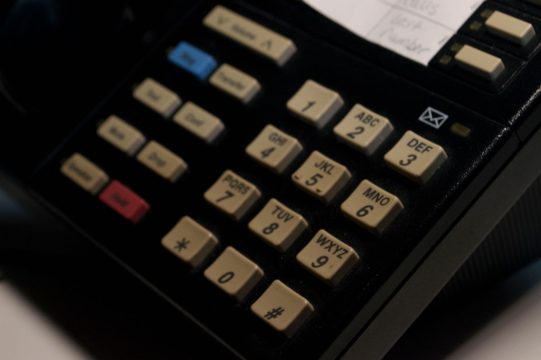It’s that time of year, a start of a new [fiscal] year and now it’s time to take my recently repaired DSLR camera to take photos of all the equipment that I have collected.
To start, this is the 8410D Voice Terminal I got when I received my Definity switch in 2015

It supports up to ten call appearances, and depending on your vintage of the PBX, it can support up to fifteen features (the ones that active in green lamps) as down triangles on the 2 line display when pressing Menu. When AT&T marketed these terminals in the 1990s, the Menu functions was encouraged to the users to take advantage of the multi call appearances.
These sets can work in 2 wire or 4 wire environments, requiring a respective circuit card. There is no need to tip DIP switches or do any other setups, if the wiring and the card matches to the right set. You can plug this into a 4 wire then move it to another desk on a 2 wire.
The traditional wiring environment for four wires required conductors on the 1 and 3, and 4 and 5 pins. Later models that used two wiring only needed conductors on the 4 & 5. These sets could work on the original System 75 PBX with intervention of the administrator to mimic the 7410 set, while maximizing the potential with the display and Menu/feature button assignments.
The 8400 series while been discontinued by Avaya for a number of years, is still compatible with current PBX hardware if you use 2 wire boards and sets. Meanwhile 4-wire boards became unsupported in CM 4 (or the 14th release of the Definity system.)
*





